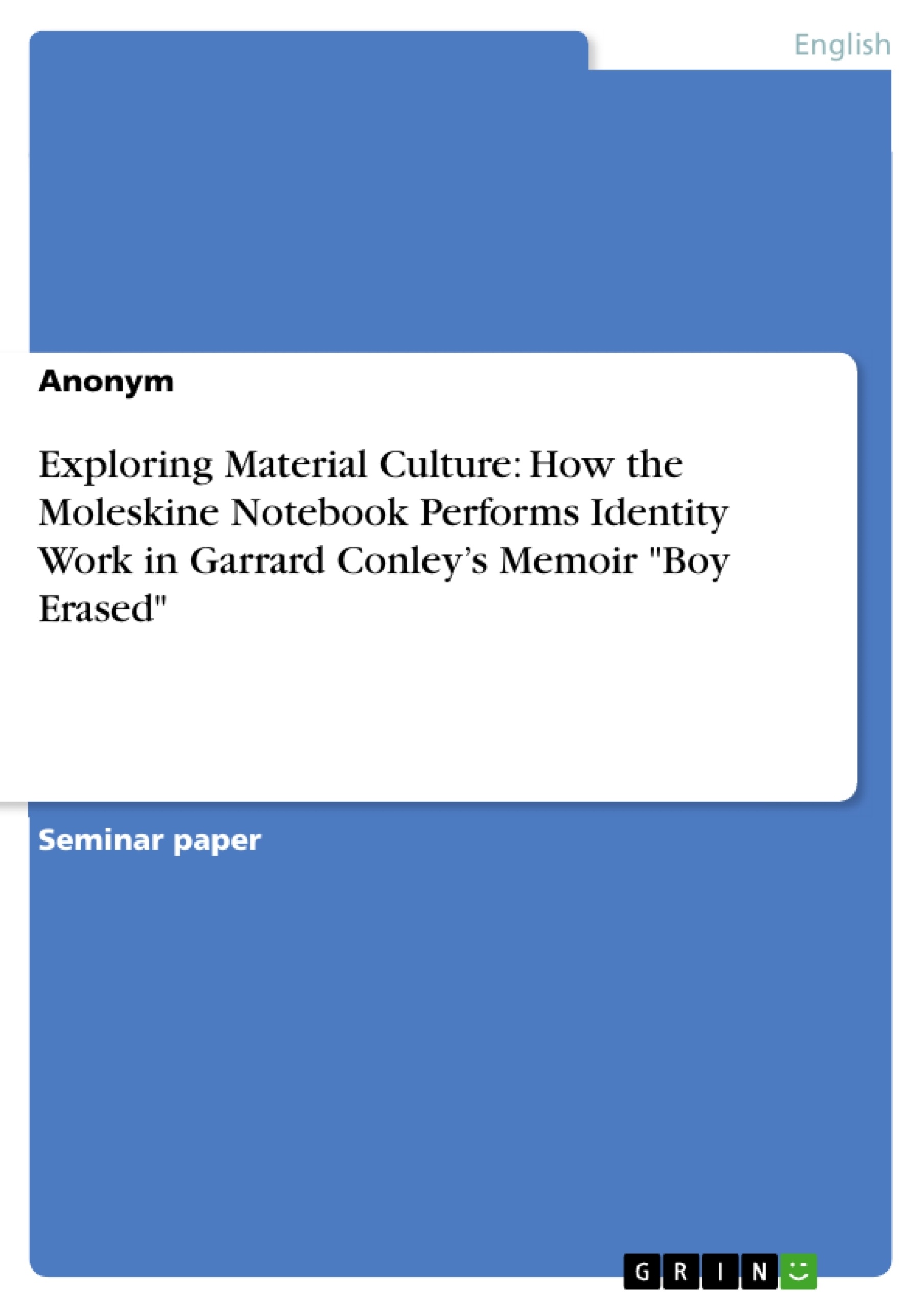This paper examines a seemingly simple object, the Moleskine notebook. The Moleskine notebook with its simple and plain design is a tool for writing and sketching. Yet, its popularity is not to be overlooked. A simple Google search for ‘Moleskine’ reveals countless blog entries, articles, detailed images, and accounts of writers’ or artists’ uses of this object. A fan blog , Moleskinerie.com, gained such popularity that the company eventually took over and now runs the blog itself. Alexis even claims that Moleskine users “constitute a sort of cult”. Not only is the Moleskine journal a practical writing tool, but it also represents who we are and thereby supports peoples’ identity work.
American author and LGBTQ activist Garrad Conley is an adamant consumer of the Moleskine notebook.In Boy Erased, a 2016 Memoir, he openly narrates his traumatizing and psychologically harmful experiences made at Love In Action, a Christian ex-gay ministry founded in 1973, and the journey of accepting and finding his identity.
Inhaltsverzeichnis (Table of Contents)
- Introduction
- Theoretical Background
- Defining Material Culture
- Objects and Identity
- The Moleskine Notebook
- The Moleskine Notebook and Identity Work in Garrard Conley's memoir Boy Erased
- Conclusion
Zielsetzung und Themenschwerpunkte (Objectives and Key Themes)
This research paper explores the symbolic importance of everyday objects, specifically the Moleskine notebook, in shaping identity. It aims to demonstrate how the Moleskine notebook, seemingly a simple writing tool, can perform identity work, inviting attachment, providing access to a desired identity, and encouraging inner reflection.
- Material culture and its relationship to people and objects
- The symbolic significance of everyday objects in shaping identity
- The Moleskine notebook as a tool for identity work
- The role of objects in navigating and expressing identity in specific social contexts
- The influence of material possessions on personal narratives and self-concept
Zusammenfassung der Kapitel (Chapter Summaries)
The introduction sets the stage by discussing the significance of material culture and how everyday objects can reveal personal narratives. The paper highlights the Moleskine notebook as a seemingly simple object with profound symbolic meaning.
The theoretical background chapter delves into the definition of material culture, exploring the reciprocal relationship between people and objects. It further examines how objects can represent and negotiate aspects of personality and identity, emphasizing the importance of contextual factors in understanding these meanings.
The paper's analysis focuses on Garrard Conley's attachment to his Moleskine notebook and how this object is linked to his identity work in a homophobic environment. It will explore the ways in which the Moleskine notebook serves as a tool for expressing and navigating his identity in a restrictive social context.
Schlüsselwörter (Keywords)
Material culture, identity work, objects, Moleskine notebook, Garrard Conley, Boy Erased, memoir, LGBTQ, identity formation, everyday objects, symbolic meaning, attachment, self-concept, social context, consumer culture.
- Citar trabajo
- Anonym (Autor), 2022, Exploring Material Culture: How the Moleskine Notebook Performs Identity Work in Garrard Conley’s Memoir "Boy Erased", Múnich, GRIN Verlag, https://www.grin.com/document/1474077




